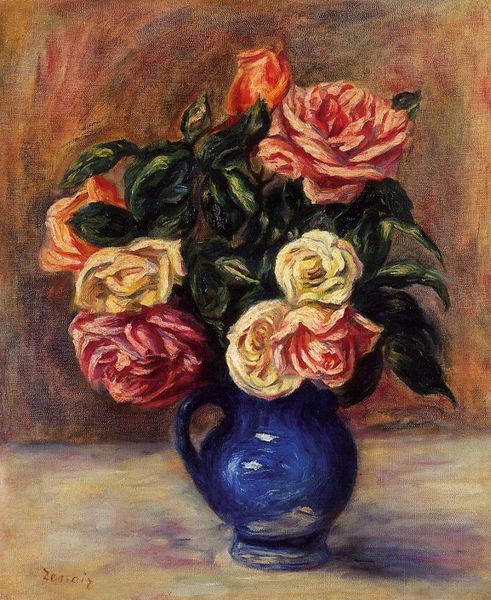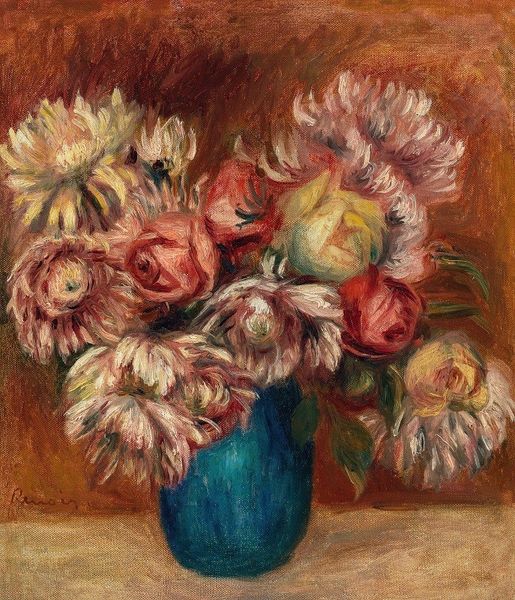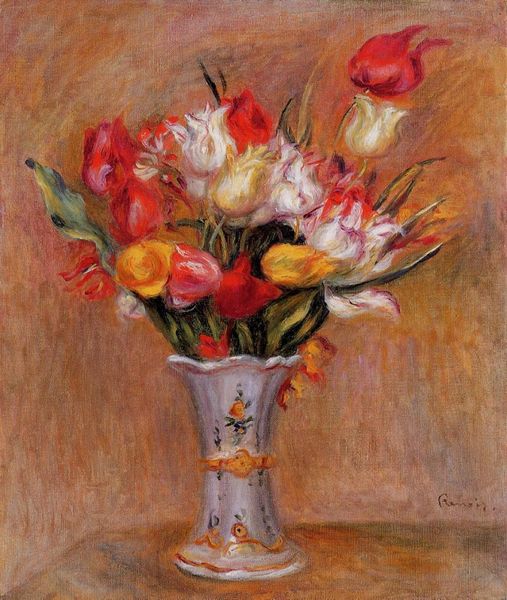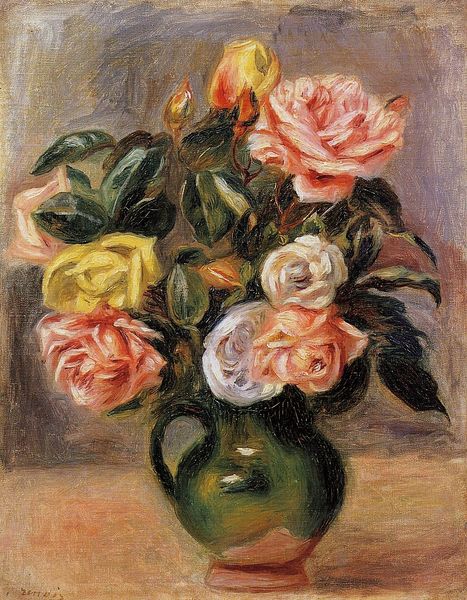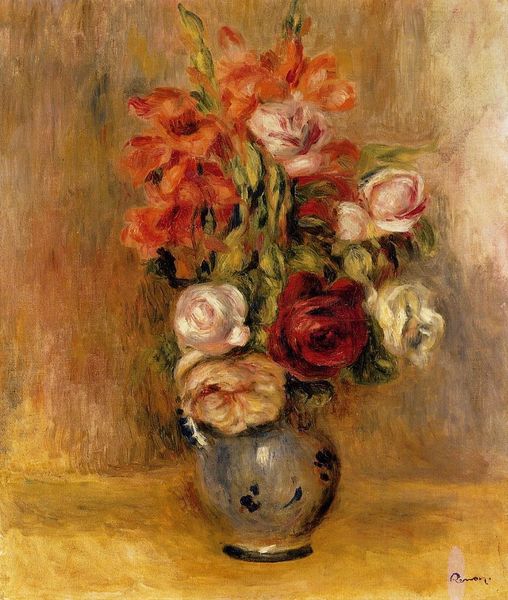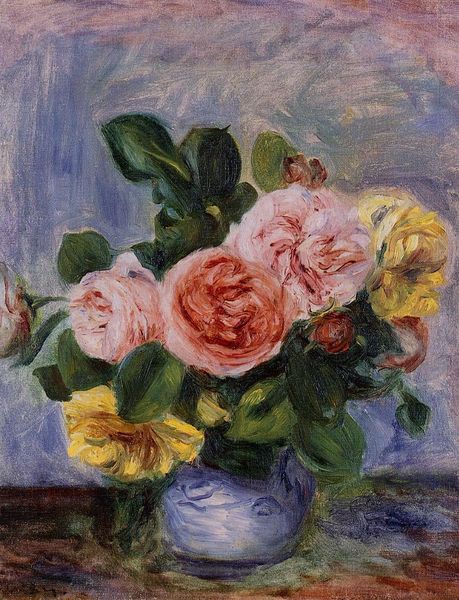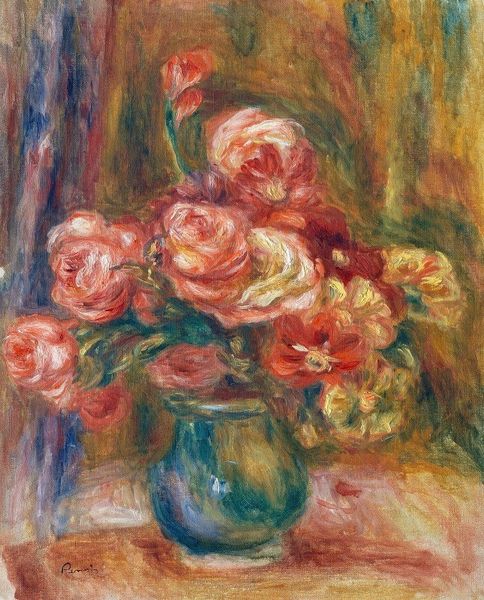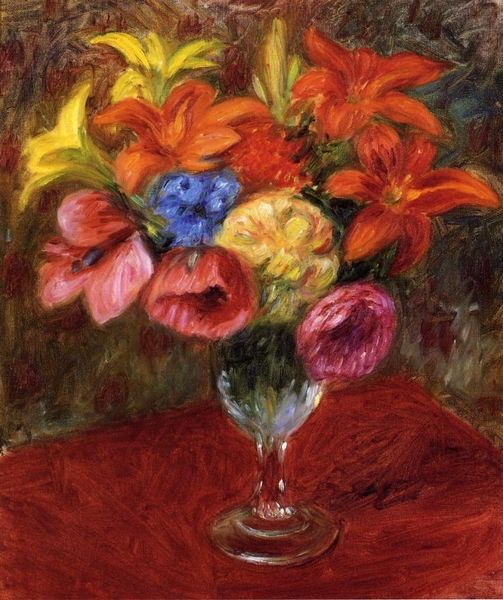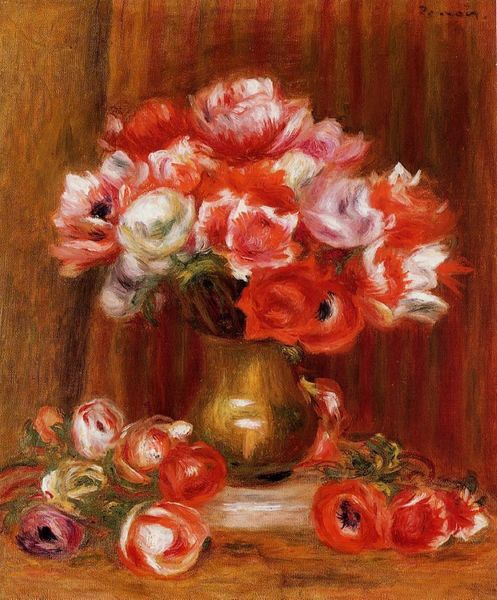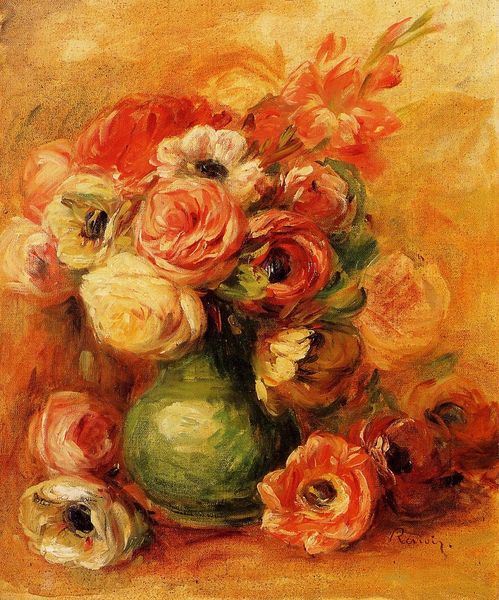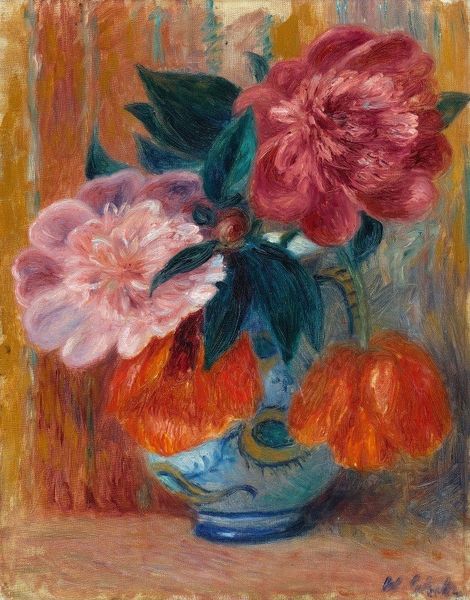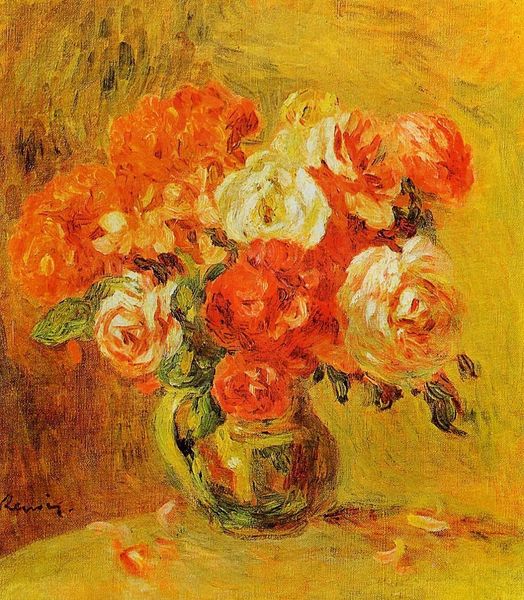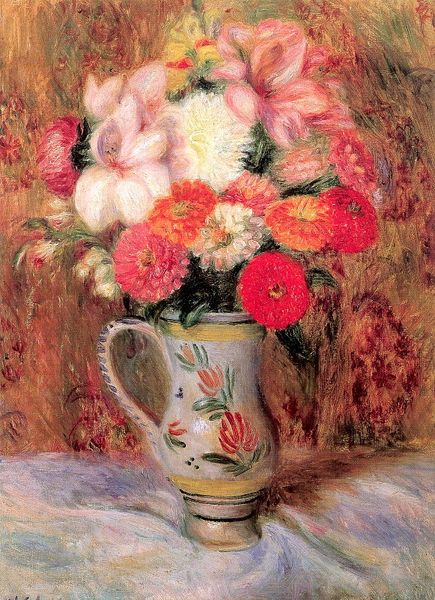
Copyright: Public domain
Editor: This is Renoir's "Bouquet" from 1913, a classic still life. The paint application looks so soft. It makes me feel like I'm looking through a dreamy lens, blurring the edges of reality. What captures your eye most in this piece? Curator: The bouquet is positively bursting! Renoir teases out such joyous expression here, especially when you remember this was late in his career when his hands were severely affected by arthritis. Think of him, almost dancing with the canvas, his movements translated into those vibrant reds and subtle pinks. Does it make you wonder about his studio, maybe sunlight streaming through a window? Editor: That makes it even more impressive! It also makes me wonder why he chose these specific flowers and vase. Curator: Good question! Often, late Renoir paintings like this weren’t necessarily about hyperrealism. Maybe the specifics matter less than the overall celebration of color and form? Perhaps they were just pretty blooms he admired, or an antique vase he favored. Art can spring from the simplest of delights, and morph into something deeper through the artist's touch. Don't you think? Editor: I see what you mean! Focusing on his joy, it kind of melts away any need to pick it apart. Curator: Exactly. And remember, Impressionism thrived on capturing fleeting moments. Think of that freedom of expression—it liberates the artist and invites us, the viewers, into a space of sensory experience, too. I mean, the brushstrokes themselves are practically alive. Editor: This has really opened my eyes to Renoir's intention here. I am looking beyond just what the flowers *are* to why the artist painted them that way! Curator: Brilliant! Art becomes such a rewarding playground once you embrace both feeling *and* thinking.
Comments
No comments
Be the first to comment and join the conversation on the ultimate creative platform.
